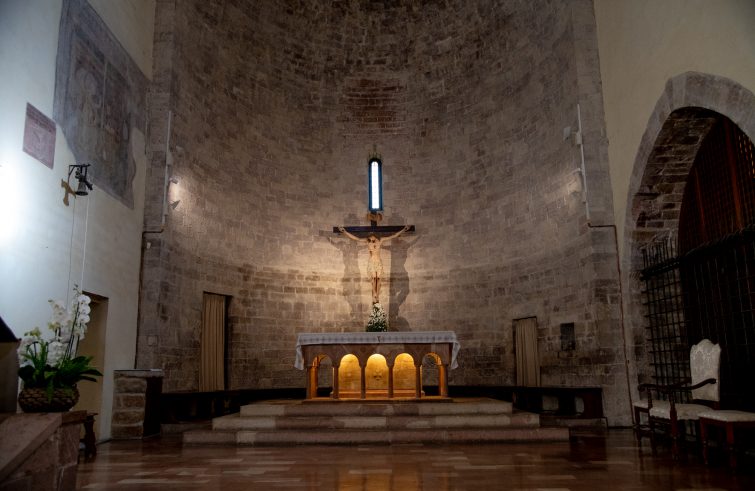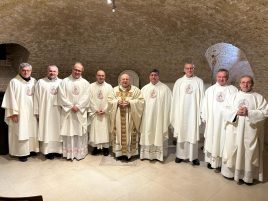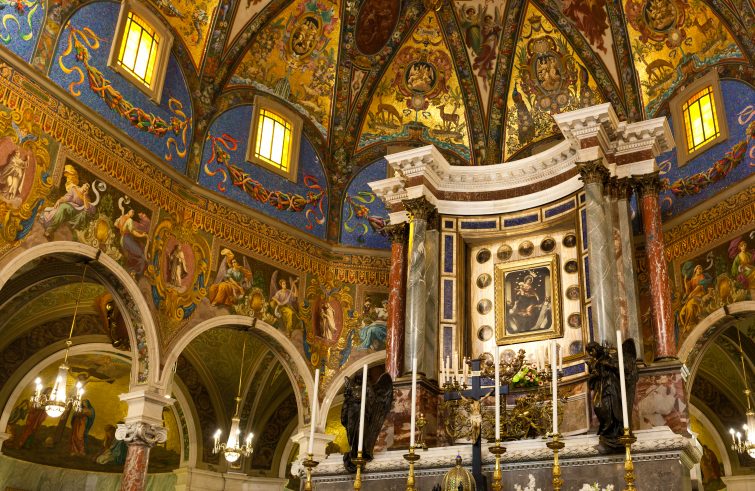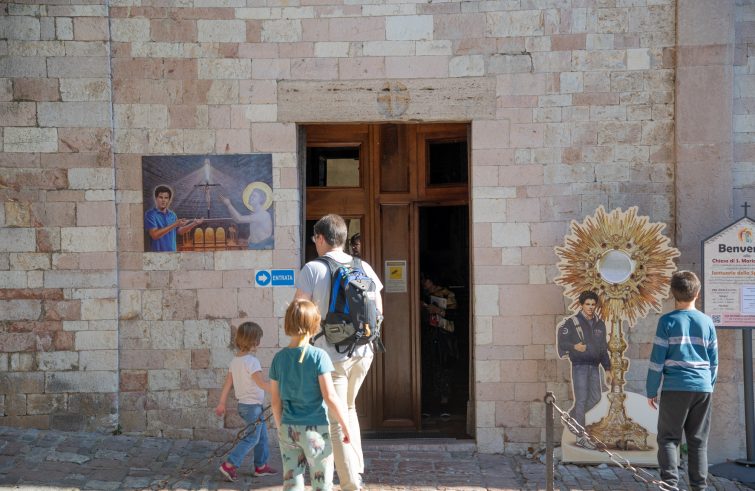
The society we live in is becoming increasingly secularised, yet the thirst for God and for meaning remains strong. Many people seeking to quench that thirst draw strength and find a response to that yearning also in the pilgrimages to holy shrines, where they find an atmosphere for reflection and strong spirituality. Italy is rich in shrines, from the north to the south of the country. Msgr. Domenico Sorrentino, bishop of the dioceses of Assisi-Nocera Umbra-Gualdo Tadino and Foligno, has been appointed ‘ad quinquennium’ ecclesiastical assistant of the National Shrines Coordination (“Collegamento nazionale santuari”). SIR asked him whether it is possible to promote the pastoral care of shrines in such a way as to make them driving forces of permanent evangelisation.
 Your Excellency, what is the role of the Coordination?
Your Excellency, what is the role of the Coordination?
It is expressed in the very word: to bring together, to connect. There are many shrines in Italy, very different from one another.
Believers visit them driven by a need for spirituality, which is frequently very deep and enlightened, and sometimes by a ‘simple’ faith. There are also many visitors driven by cultural or artistic interests, or mere curiosity.
Unlike parishes, pilgrims visit the shrines on an occasional basis, although they often make repeated visits. The Coordination brings together the Rectors and operators of the shrines who share their experiences, hold formation sessions together, and organise shared events.
At a time of strong secularisation yet also of great yearning for meaning, to what extent can the shrines contribute towards rediscovering the faith?
If pastoral ministry is properly carried out in the shrines, the latter can become veritable outposts for evangelisation.
With respect to other churches, they possess what can be described as a ‘charismatic’ identity. These are sites permeated by a special spiritual dimension. When they are attached to special titles of God and the Virgin Mary, their appeal stems not only from the contemplated mystery, but also from being testimonies of the many pilgrims who poured their prayers and often their tears into these places over time. in those shrines that are associated with Saints and the Blessed, believers find the Gospel mirrored in their lives.
The shrines offer an intense experience of God, as well as a powerful experience of our humanity. The pilgrim normally spend a short time there, but even that short amount of time can have a strong spiritual impact. It is a great responsibility for those ministering there.
 We have many shrines in Italy, you served as priest in Pompei, home to an important Marian shrine. Are the shrines in Italy mostly Marian shrines?
We have many shrines in Italy, you served as priest in Pompei, home to an important Marian shrine. Are the shrines in Italy mostly Marian shrines?
There are certainly many Marian shrines. People visit a Marian shrine as they would visit the Blessed Mother’s house. In this respect, my experience of Pompeii proved especially inspiring. The gaze of the pilgrims discloses a true, heartfelt, trusting dialogue with Mary. By entrusting themselves to Mary, the believers feel that they are not lost. And Mary leads to Jesus, indicates Him, entrusts Him to us. He is the Saviour.
One of the responsibilities of those who devote themselves to Marian shrines is to ensure that Marian devotion becomes increasingly ‘Christ-centred’.
You are serving as bishop in Assisi, home to another important shrine, the Shrine of Renunciation, dedicated to Saint Francis, and to Blessed Carlo Acutis, both of whom continue to have a strong impact on the hearts of our contemporaries, young and old. What is the experience in Assisi with this Shrine?
The Shrine of Renunciation traces its roots back in history, but as a shrine, it is a new tile in the Assisi shrine mosaic. It registered an astonishing number of visitors in just a few years, especially considering that many of them are children and young people.
Francesco and Carlo are an incredible ‘team’.
The image of the “Poor Man of Assisi”, who stripped himself of all material possessions to embrace Christ and the poor, and the image of the Blessed, in his youthful, smiling holiness, utterly representative of our present times, yet so sound and profoundly Eucharistic, provide an intimately inspiring direction for life. The two images are depicted together at the entrance to the Shrine, with their hands indicating Jesus. In different ways, Francis and Carlo convey the same message.
 Your decree of appointment contains the “firm hope” that you may contribute to the development of the pastoral care of shrines in Italy. Could they become driving forces for permanent evangelisation?
Your decree of appointment contains the “firm hope” that you may contribute to the development of the pastoral care of shrines in Italy. Could they become driving forces for permanent evangelisation?
I accepted this appointment with gratitude, knowing that I have a lot to learn, notably by becoming acquainted with and networking with all those involved in this area of pastoral ministry. The shrines offer reception services, catechesis, celebrations – especially of the Eucharist – confession, various devotional practices, especially the Rosary, with handouts, exhibits, guides, ‘ex-voto’, all of which are potential vehicles for evangelisation.
Through their service, the shrines can greatly contribute to evangelisation. They most definitely support parishes’ ordinary pastoral ministry, which they do not replace and which stand as their points of reference.
A number of forthcoming events, such as the Jubilee of the year 2025 or the Franciscan Centenary, along with other significant anniversaries of individual shrines, may offer new opportunities. The pastoral care of the shrines comprises many things, but I hope that the overriding commitment for all is putting the Gospel back into people’s hands and hearts. That should be our starting point.
Is the fact that the faithful approach the sacrament of reconciliation more easily in the shrines a major strength?
It is certainly one of the strengths of many shrines, especially if the sacrament of reconciliation is properly celebrated and organised.
It provides the most favourable environment to pour one’s sins into the arms of divine Mercy and start a new life, a place where it is possible to experience a ‘conversion’. I have seen this many times both in Pompeii and in Assisi.
We also realise, however, that the sacrament of reconciliation is experiencing a deep crisis. It must be relaunched.
 How can the pilgrimages to these sites steeped in faith and spirituality be encouraged further?
How can the pilgrimages to these sites steeped in faith and spirituality be encouraged further?
Shrines exert an appeal of their own and do not need to grow by way of ‘propaganda’.
Their strength lies in ‘gratia loci’: in other words, it flows from on high.
However, greater awareness and information can clearly help. In this regard, the Coordination can promote the dissemination of useful experiences and ideas. What always makes the difference is the information passed on from person to person, by those who had a personal experience of the shrine, when they find not only the specific grace but also a quality service.
Could initiatives like the Night of the Shrines contribute to this?
I believe so. But it is an ‘extraordinary’ initiative, which is useful inasmuch as ordinary activities are carried out in the best possible way.










